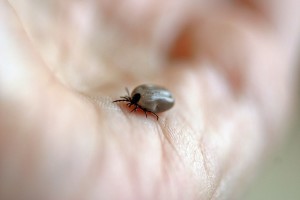 Summer is almost here and that means lots of time outdoors. And while that’s a good thing, Marla Ahlgrimm explains that it also means potential exposure to warm-weather hazards, including Lyme disease.
Summer is almost here and that means lots of time outdoors. And while that’s a good thing, Marla Ahlgrimm explains that it also means potential exposure to warm-weather hazards, including Lyme disease.
According to Marla Ahlgrimm, Lyme disease is the result of being bitten by a tick infected with a specific bacteria. Symptoms are mild at first and may initially appear as a rash with a bull’s-eye pattern. Not all people bitten by an infected tick will develop a rash. As Lyme disease progresses, it can present with fatigue, a stiff neck, body aches, headache, and fever, which can spike to 101° or higher.
Unfortunately, as Marla Ahlgrimm explains, Lyme disease is often misdiagnosed as its symptoms mimic those of the seasonal flu and a number of other less serious conditions. People who do not spend a great deal of time outdoors may reject the notion of Lyme disease altogether. Further complicating matters is that laboratory testing is not always conclusive until the infection has spread for two to three weeks.
The good news, however, is that Lyme disease is a treatable condition. Marla Ahlgrimm notes that antibiotics are typically all that are needed to rectify the infection. Not all infections will be cured, but the sooner treatment is started the better. Once the infection is gone, Marla Ahlgrimm notes that many people still experience issues known as posttreatment Lyme disease syndrome or PTLDS. People with PTLDS do not typically respond to long-term antibiotics but must focus on treating the symptoms, which include aches and pains.
According to Marla Ahlgrimm, Lyme disease is not a new disorder but one that has increased nearly fourfold since 1995. The CDC estimates that there are nearly 300,000 cases of Lyme disease each year, of which only 40,000 are diagnosed.













 Marla Ahlgrimm has co-authored two ground-breaking books,
Marla Ahlgrimm has co-authored two ground-breaking books,